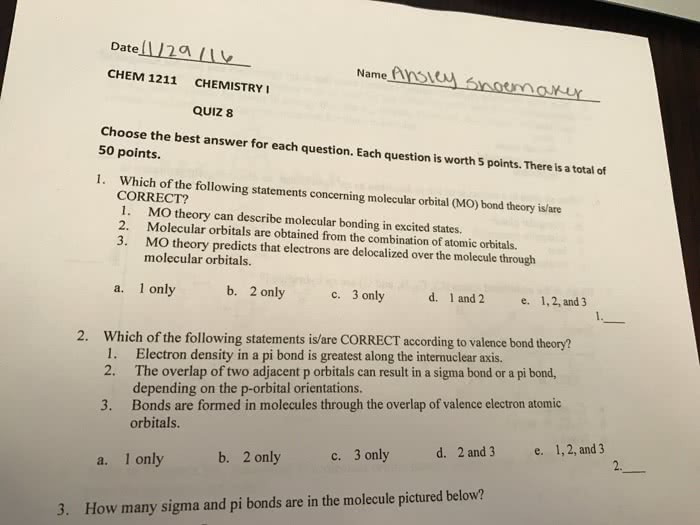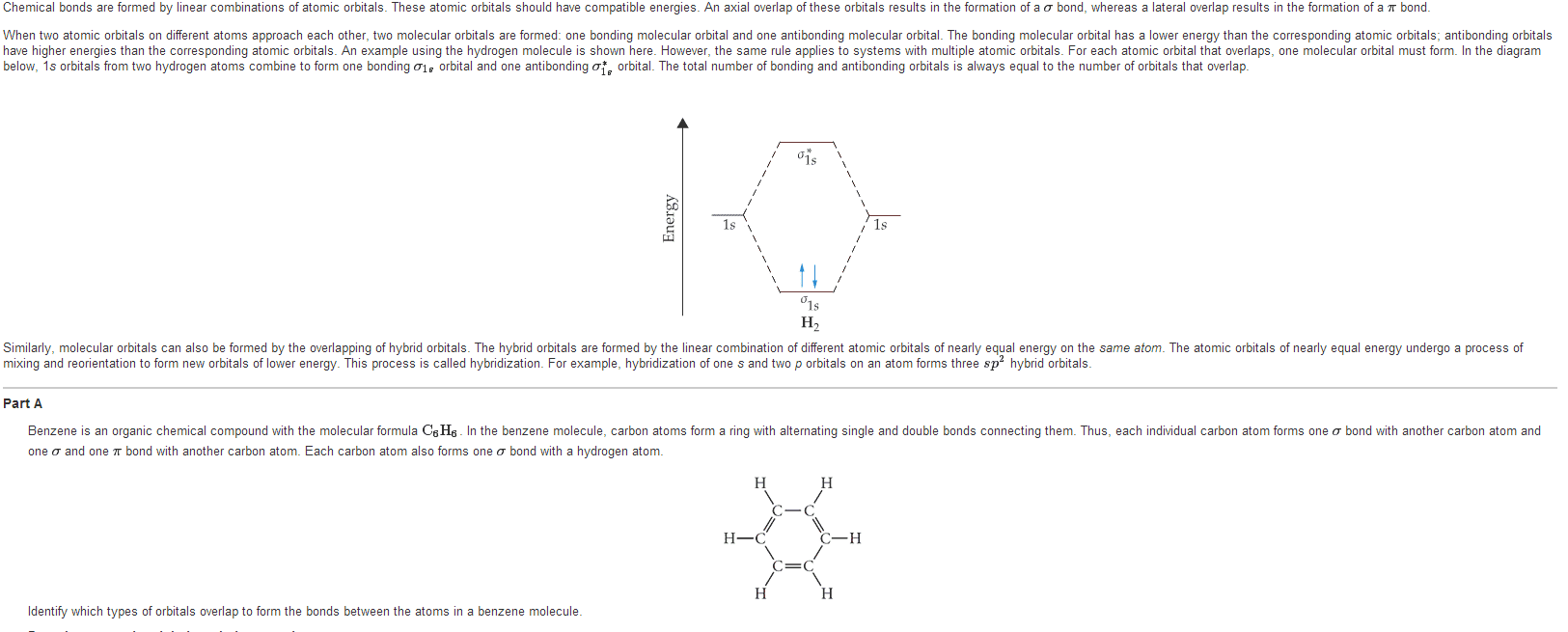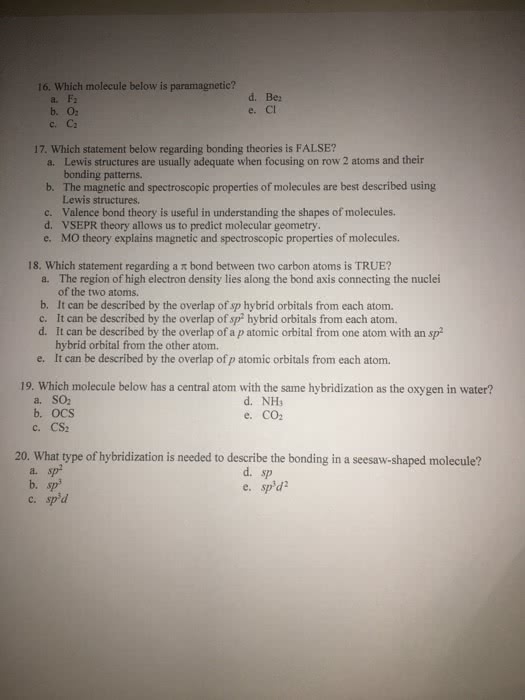CHEM 130 Lecture Notes - Lecture 30: Molecular Orbital Theory, Molecular Orbital, Orbital Hybridisation
Document Summary
Chem 130: general chemistry: macroscopic investigations and reaction principles - More than one orbital from each bonding atom might overlap, resulting in a multiple bond. Formed either when two s orbitals overlap or when an orbital with directional character, such as a p orbital or a hybrid orbital, overlaps another orbital along their axis. Has an electron distribution above and below the bond axis. Formed by the sideways overlap of two parallel b orbitals. A sideways overlap will not give so strong a bond as an along-the- axis overlap of two p orbitals. Occurs when two parallel orbitals are still available after strong bonds have formed. A theory of the electronic structure of molecules in terms of molecular orbitals, who may spread over several atoms or the entire molecule. Molecular orbitals that are concentrated in regions between nuclei. Molecular orbitals having zero values in the region between two nuclei and therefore concentrated in other regions.




